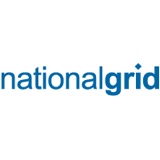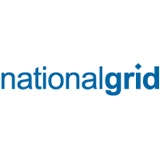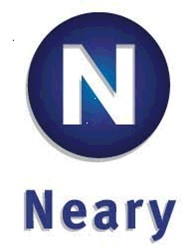Information
-
Job Name
-
Job Number
-
Report Date (YYYYMMDD)
-
Superintendent
-
Project Manager
-
Location
OSHA and General Requirements and Postings
-
Is a well stocked first aid cabinet on site and inspected weekly?
-
Is the first aid log posted on the cabinet?
-
Are emergency telephone numbers posted?
-
Is the 5-in-1 poster & Emergency Action Plan posted?
-
Are toolbox meetings being conducted and documented?
-
Are Job Hazard Analysis' conducted and documented?
-
Are the MSDS & Safety Manual on site and available to employees?
Personal Protective Equipment
-
Are employees wearing hardhats, and eye protection?
-
Are employees wearing ear plugs, face shields, traffic vests, and gloves, where they are required?
-
Are employees wearing proper clothing and work boots?
-
Do employees have tarsal guards on during required tasks?
-
Did Employees inspect PPE prior to the start of their shift?
Personal Fall Arrest Systems
-
Are employees using these systems when required?
-
Have the employees been trained in the use of these systems and using the systems correctly?
-
Is the equipment installed correctly and in good condition?
-
Are proper tie-off points used?
Sanitation
-
Are toilet facilities adequate and reasonably clean?
-
Are drinking cups placed into the trash containers and the trash containers located next to all water cans?
-
Are water containers cleaned and clearly marked of the contents?
Fire Protection
-
Have employees been trained in the use of fire extinguishers?
-
Are extinguisher inspections current and extinguisher in good working order?
-
Is there a fire extinguisher within 100 feet of all work areas?
-
Do fuel cans have flame-arrester screen and self-closing lid?
-
Is a fire extinguisher located at least 50 feet from all flammable or combustible liquids of 5 gallons or more or cutting rebar?
-
Is there at least one 20 lb extinguisher located 25 to 75 feet from outside storage tanks and the storage tank(s) grounded?
-
Are adequate "NO SMOKING" signs provided in fuel storage areas?
-
Are portable storage containers properly marked?
Signs and Barricades
-
Are signs and barricades used to protect the public from job hazards?
-
Are the signs and barricades adequate?
-
Are employees trained in the difference between caution and danger tape?
-
Is caution and danger tape being used properly and removed when not needed?
House Keeping, Material Handling, and Rigging
-
Are all aisle-ways and emergency routes clear of materials and debris?
-
Are items stacked low enough to prevent materials from falling?
-
Are nails removed from scrap lumber?
-
Are materials on upper floors secured to prevent displacement?
-
Are non-compatible materials separated?
-
Is picking eye available and used on forklift?
-
Is rigging inspected daily and in good condition when in use?
-
Are nylon straps free from cuts, frayes, or damage?
-
Do wire ropes have legible tags and are free from damage? (not kinked, crushed, or bird caged)
Tools
-
Are tools requiring guards equipped and in good working order?
-
Are hazardous parts guarded?
-
Are electrical cords in good condition?
-
Are the data plates on tools legible?
-
Are tools being inspected and used properly for the task?
-
Are hoses on the air compressor secured?
-
Has the saw depth been checked prior to cutting?
-
Are employees trained to operate powder-actuated tools?
Electrical
-
Are GFCIs being inspected on a weekly basis and in good working order?
-
Are temporary lights properly suspended?
-
Are all electrical boxes, cords, receptacles, breakers, etc. being used for their intended use per NFPA, NEC, OSHA and their UL rating?
-
Are cords running from boxes protected from cutting or pulling from box?
-
Are extension cords being inspected daily?
Ladders
-
Are the spreaders on step ladders locked?
-
Are ladders inspected and in good condition with all required labels?
-
Do side rails extend 36 inches above landings?
-
Are extension or job made ladders tied off or is an employee holding the ladder?
-
Are doorways barricaded when ladders are set in front of them and a clear access/egress to the ladder?
-
Are employees using ladders properly?
-
Are job made ladders built properly (no double-headed nails)?
-
Is the ladder placed at the proper angle?
-
Are two way ladders in use as needed?
-
Are the manufacturer's labels affixed and legible?
Excavations
-
Are employees protected from falling into pier or similar holes?
-
Is the competent person present?
-
Are excavations that are 5 feet or deeper in depth properly sloped, benched or shored?
-
Have provisions been made to control water accumulation?
-
Have excavations of 20 feet or more in depth been designed by a PE?
-
Is heavy equipment kept a safe distance from the edge and the spoil pile a minimum of 2' from the excavation?
-
Has proper access and egress been provided?
-
Are the utility locates less than 10 days old and clearly marked?
-
Is excavation properly barricaded and signs posted?
-
Are utility locates clearly communicated with backhoe operator or were they pot-holed to the depth?
-
Are underground utilities protected while excavation is open?
Floor and Wall Openings, Stairwells and Roofs
-
Do all holes (2" or more) or perimeters that are 6 feet or more above a lower level have guardrails or hole covers?
-
Are hole covers secured, marked "hole" or "cover" and capable of supporting intended loads?
-
Are employees protected from falling objects?
-
Are stacked materials kept at a safe distance from toe boards?
-
Do guardrails and stair rails meet OSHA requirements?
-
Are steel stair pan treads filled?
-
Is proper fall protection provided on the roof?
-
Are stairs and ladders properly constructed (no double-headed nails)?
-
Are warning lines flagged eery 6' with high visibility material?
-
Is there access/egress for changes in elevation greater than 19" for walking/working surfaces?
Structural
-
Is there proper access/egress on elevated decks?
-
Is there proper fire extinguishing equipment available?
-
Is proper fall protection being used for each operation?
-
Are all protruding vertical and horizontal rebar capped?
-
Is shoring and scaffolding installed properly and inspected before a pour?
-
Is housekeeping on elevated decks in order?
Heavy Equipment
-
Are seatbelts being used by the operators?
-
Are riders not allowed on the equipment?
-
Does equipment have a functional back-up alarm?
-
Are the operators driving equipment at safe speeds?
-
Is the operator trained?
-
Has the equipment been inspected and in good working order?
-
Are picking eyes readily available for lifts?
-
Is equipment attended to while running?
-
Is parking brake set and all forks and buckets lowered to ground when equipment is not in use?
-
Does equipment have fire extinguishers and required manufacturer labels?
-
This inspection reflects the condition of the jobsite at the time of inspection and is limited by the portion of the site that was inspected.
-
Additional Comments
-
Superintendents Name
-
Select date
-
This Audit should be done on all projects on a weekly basis by a Superintendent, designated CCC employee and designated Subcontractor's representatives.
-
The Safety Audit should be completed and turned into the senior Safety Engineer, Project Manager, and a copy of the Audit should be filed in the job file.
If any of the items below apply to this job, please use the appropriate supplemental catagories.
Welding and Cutting - Supplement A
-
Are all leads and stringers in good condition?
-
Are bare spots in welding leads taped?
-
Is the first 10 feet of welding leads free from repair?
-
Is proper eye protection being used?
-
Are all cylinders secured in an upright position?
-
Is there at least one 10 lb extinguisher within 50 feet of oxygen and acetylene storage areas?
-
Are oxygen and acetylene bottles stored 20 feet apart?
-
Is there a fire watch for welding and cutting above combustible materials?
-
Is cutting torch in good working order?
-
Additional Comments
Scaffolds - Supplement B
-
Is fall protection provided for employees erecting or dismantling scaffold?
-
Are scaffolds set on firm, secure footings with base plates and mud sills?
-
Are scaffolding components inspected and in good condition?
-
Has the Scaffold been tied off every 30 feet in length and every 25 feet in height (ties must be installed when the height of the scaffold is more than 4 times when the height of the scaffold is more than the minimum base width).
-
Are scaffold boards properly overlapped and secured? (12")
-
Are rolling scaffolds moved correctly? (Not being surfed from the platform)
-
Is fall protection and falling object protection provided?
-
Have employees been trained in the hazards associated with scaffolds and scaffold work?
-
Is the area below the scaffolding barricaded or toe-boards erected?
-
Have the scaffolding been inspected?
-
Additional Comments
Cranes - Supplement C
-
Is the annual inspection current?
-
Are the daily inspections being conducted?
-
Is the operator's manual and load chart in the crane?
-
Has the crane received the proper routine maintenance?
-
Are pendent lines and hoist cables greased?
-
Does the LMI and Anti-Two block work?
-
Is there a fire extinguisher on the crane?
-
Is the crane cab free from window cracks?
-
Is all rigging in good condition and inspected before each use?
-
If outriggers are used, are they on a level surface?
-
Is proper cribbing or matting used?
-
Is the entire swing radius barricaded?
-
Can the crane operator see the signal-person?
-
Are the ANSI approved hand signals being used?
-
Are two-way radios being used to communicate with the operator?
-
Is the rigging appropriate for the lift?
-
Has the equipment been inspected prior to use?
-
Are chain slings inspected and documented (monthly)?
-
Are tag-lines being used to control the load?
-
Is weather conditions adequate for lifts?
-
Is the crane appropriately sized?
-
Have competent riggers been identified?
-
Is there a copy of the crane operator's qualification on file?
-
Additional Comments
Aerial Lifts - Supplement D
-
Are employees using proper fall protection?
-
Are employees remaining on the platform at all times?
-
Is the gate or chain closed when occupied?
-
Are lifts set on level ground, per manufacturers' recommendations?
-
Is operator trained?
-
Are tools and material secured from displacement?
-
Are lanyards attached to proper anchorage points?
-
Is the lifting capacity visible and appropriate for the task?
-
Additional Comments

















